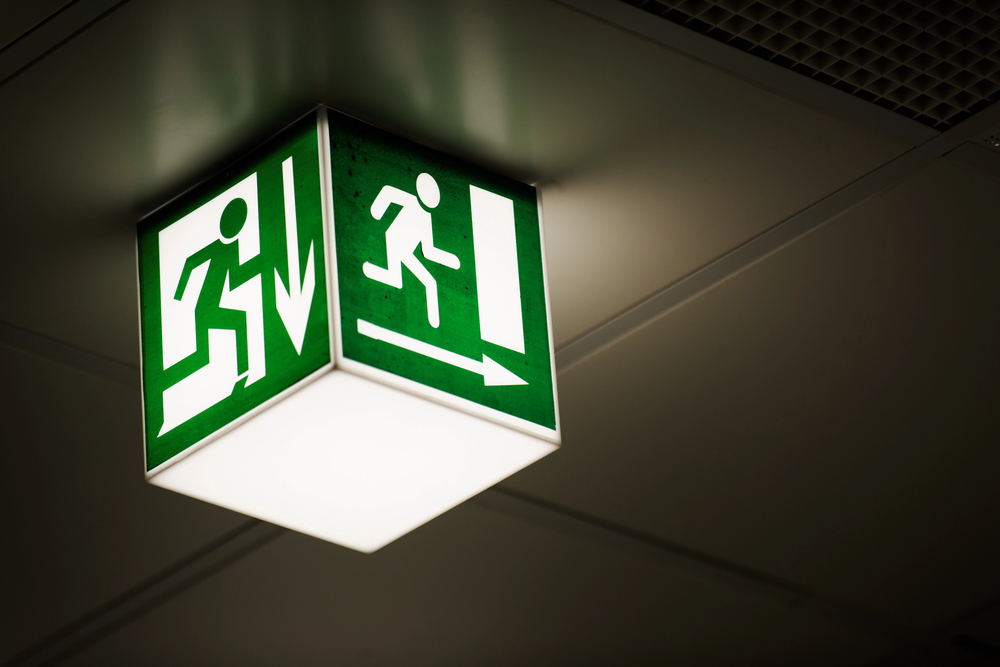 20
Nov
20
Nov
A Go-To Guide To Checking Emergency Lighting
- 0 Comment(s)
- November 20, 2024
Although emergency lighting may not be the most noticeable feature in a building, it plays an indispensable role during power outages. Consider the scenario of being in a completely dark hallway during a blackout—this situation can be quite alarming. Emergency lighting steps in to guide individuals to safety in such circumstances. Knowing how to properly check emergency lighting is key to keeping this vital system operational when needed most.
Why Emergency Lighting Matters
Emergency lighting is not simply a regulatory requirement; it is a critical safety measure that plays a significant role in emergencies. In the event of a blackout, fire, or other crises, emergency lights assist individuals in locating exits, navigating stairs, and remaining calm. The soft glow from these lights offers reassurance, helping to direct people to safety. Therefore, it is important to maintain these lights in proper working condition.
How Often Should You Check Emergency Lighting?
Routine inspections are necessary for maintaining the reliability of emergency lighting systems. There are two primary tests to conduct: monthly and annual. The monthly test is a brief check to confirm that the lights function correctly for several minutes. The annual test is more comprehensive. This requires the lights to operate for their full duration, typically around 90 minutes. Both tests are important for identifying any potential issues before an emergency arises.
Monthly Emergency Lighting Test
The monthly test is straightforward and does not require specialized tools. To conduct the test, press the test button on each light, which temporarily switches the light to battery power. If the light remains illuminated throughout the test, the system is functioning correctly. If the light does not stay on, it is important to investigate the issue and address it promptly, before the lights are required in a real emergency.
Annual Emergency Lighting Test
The annual test is more detailed and important in guaranteeing the system’s full functionality. During this test, the lights must operate for their full battery duration, which typically lasts 90 minutes. This simulates an actual power outage to confirm that the batteries can provide sufficient lighting for the required duration. The lights should remain on for the entire duration of the test. If any of the lights flicker or fail, emergency lighting repair or replacement may be necessary.
Key Points to Examine During Inspections
During an emergency lighting inspection, there are several factors to monitor. First, confirm that all lights are in their designated positions and are not obstructed or displaced. Second, check the brightness of the lamps to make sure they provide adequate illumination; dim lighting will not be effective in an emergency situation. Lastly, examine the casings for any visible damage. Cracked or broken casings could lead to malfunctions, especially if moisture enters the system.
Common Issues with Emergency Lighting
As with any system, emergency lighting can encounter issues over time. The most common problems include dead batteries, faulty bulbs, or wiring malfunctions. Occasionally, light may pass the monthly test but fail during the annual test, which often indicates that the battery is no longer holding a sufficient charge. Addressing these problems promptly is vital for maintaining the system’s functionality and safeguarding the building’s occupants.
The Importance of Record-Keeping
Maintaining accurate records of emergency lighting inspections is important. Documenting both monthly and annual tests helps track recurring issues and confirms compliance with safety regulations. The records also serve as proof that the system meets safety codes.
A simple log, whether digital or written, noting the date of the inspection, the results, and any actions taken, will suffice. These records are important in the event that proof of the system’s compliance with legal requirements is needed.
The Value of Professional Assistance
While basic checks can be performed on emergency lighting systems, it is advisable to rely on professionals for more thorough inspections. Experts have the knowledge and tools to detect issues that may be overlooked by untrained individuals.
Additionally, they can address any deficiencies immediately and prevent future complications. Annual tests require technical expertise. A professional can guarantee that all lights are functioning properly, and ready for use during emergencies. Relying on professionals for these tasks is a proactive approach to safeguarding the building and its occupants.
Let Yadkin Fire & Safety Maintain Your Emergency Lighting
Although inspecting emergency lighting might seem like a small task, it is a core step in maintaining safety during emergencies. Keeping these lights operational can make a significant difference in guiding individuals to safety. At Yadkin Fire & Safety, we specialize in emergency lighting maintenance, fire extinguisher services, fire alarm systems, and much more.
With over 25 years of experience, we have the expertise to make sure that all safety systems in your building function as intended. From routine inspections to emergency repairs, we offer comprehensive solutions to meet your needs. To maintain the safety of your building and remain in compliance with codes, contact us at (336) 699-4370. Let us keep your emergency lights in optimal condition, ready to operate when needed most.

